Where to Place Your Safe at Home
While irreplaceable items are better stored in the bank for added security, having a safe at home provides you with a fireproof spot to store replaceable valuables. These can be your credit cards, passports, documents, etc. There are many spots at home where you can stash a safe but still, a fair share of these may be in the first place where a thief would look for them. 5-Minute Crafts found some tips that will help you figure out where the best place to install your safe at home is.
A. Before installing the safe
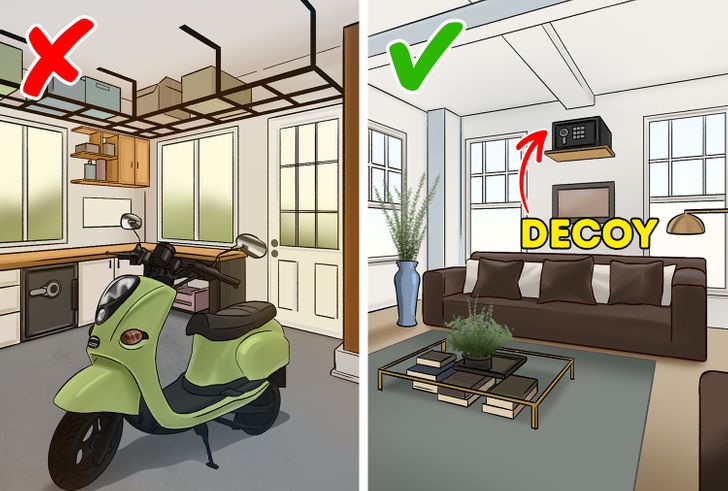
Before getting to the point, ask yourself the following questions:
- Should I hide my safe or leave it in plain sight? Oftentimes it’s better to hide the safe. If you have 2 safes, consider using one of them as a decoy.
- Is my safe electronic? If so, avoid installing it in humid areas, like a laundry room or garage. Otherwise, the electronics might malfunction.
- How to keep my personal vault safe from a fire? Besides burglary, fire poses the greatest risk for your valuables. Thus, refrain from placing your safe in a kitchen or any other room where fires tend to break out.
- How likely is a flood to happen? If flooding is a considerable threat, it’s better to place your safe as high as possible. An upper level would be great.
B. What is the best place to put a safe at home?
The answer to this question depends on many things: the size of your safe, the number of rooms and floors in your home, and the value of your belongings, among others. In that sense, there’s no definite answer. With this in mind, consider the following places to hide your safety deposit box.
1. Beneath or in the floor
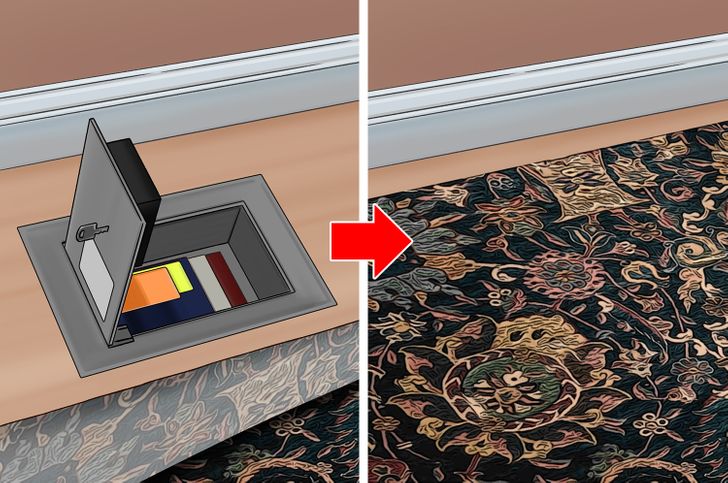
Hiding a safe in or beneath the floor may be a good option if the room isn’t prone to flooding.
And these are the benefits you’d have:
- Concealing isn’t an issue.
- You would have easy access.
Some downsides you may face with this approach are:
- You’d have to bend down when using the box.
- You’d have to hire a professional for installation if the floor is concrete or cement.
- Dust could penetrate the safe and damage the lock. To prevent this, blow the dust away with pressurized air and lubricate the key lock every 3 to 6 months.
2. In the wall
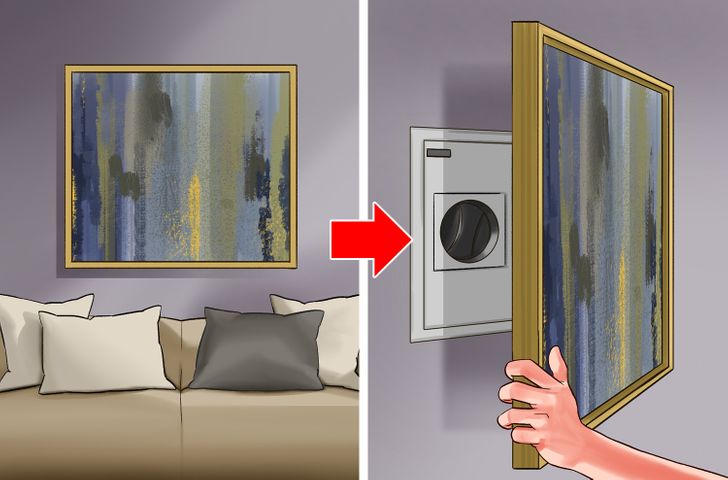
Embedding a safe in the wall has many advantages. To benefit from those, prioritize a thick external wall that could accommodate a niche for the box.
If you meet the criteria, the benefits you’d have are:
- A hard-to-match security level
- Easy access, and
- Simple hiding (like behind a painting or a mirror, for example)
Otherwise, you might have to deal with the following cons:
- Issues when opening the safe if cement exerts pressure on the box. To avoid that, consider hiring an expert for installation.
- If the wall is brick-made, a thief may need to only remove a few rows in order to pull out the safe. The solution to this problem may be building the safe into a concrete wall.
3. Against a concrete wall
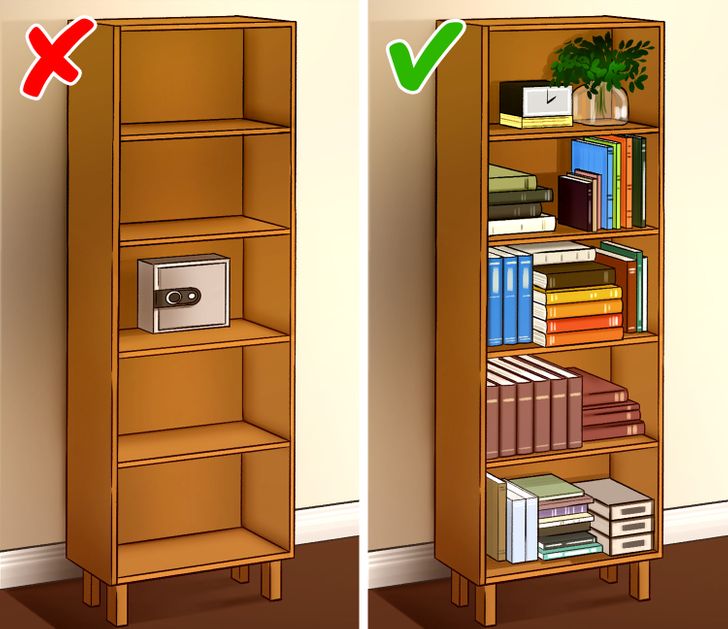
Think about using a shelf and books, for example, to mask the safe. Or take a piece of furniture to hide the safe altogether.
Benefits you’d have with such an approach are:
- Access to the safe on a shelf is easy
- Using furnishings (heavier ones, in particular) significantly improves protection
Potential downsides may be:
- A burglar won’t have a hard time finding the safe on a shelf. Thus, you should attach the box to a concrete wall to prevent them from taking it out easily.
- If you resort to furniture, you might have to make a hole in the back of a couch or some other movable object.
C. Where you shouldn’t put your safe
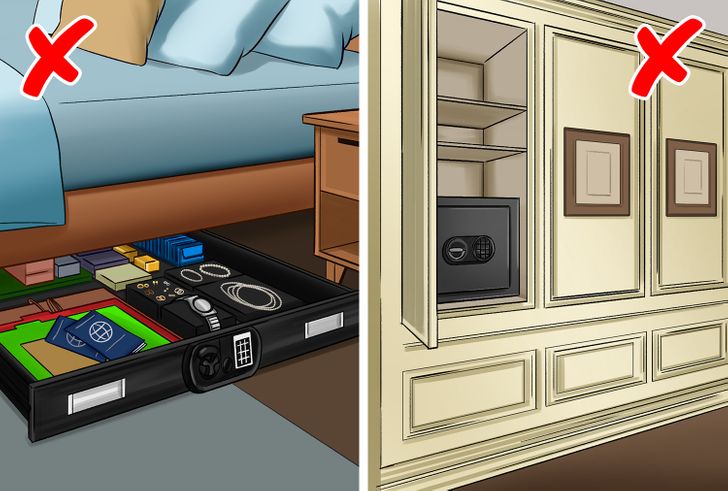
If you are after premium safety, avoiding the following places is a good idea:
- Laundry baskets, vases, drawers, kitchen counters, and beds with storage are places thieves know people use to hide their belongings.
- Attaching a safe to the cabinet is also a poor choice because the robber won’t have to struggle to detach the box upon locating it, if they have the right tools and enough time.